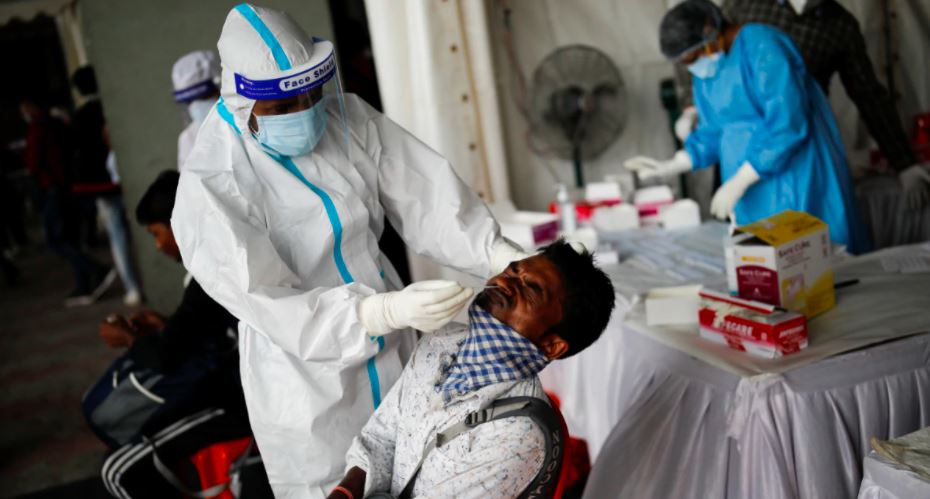When Covid-19 first struck India early last year, the country was ill-prepared to handle a raging pandemic. Around the world, treatment regimes, inhibitory techniques and preventive methods were close to unknown. The medical staff in India was caught off guard and did not know how patients infected with the virus are to be treated, and for how long. States across India had medical infrastructure completely ill-equipped to deal with a pandemic. It was in these trying circumstances that the Modi government had imposed a stringent nationwide lockdown – at the cost of India’s economy. At the time, lockdowns were in trend, and the only way known to humanity to fight the Chinese pandemic.
The nationwide lockdown was aimed at primarily ramping up medical infrastructure across the country to deal with what would be a long-lasting crisis. Now that we see the Modi government’s decision retrospectively, it is found that the lockdown was our most formidable tool in March 2020. In April 2021, however, we have two tools – vaccination and the three-fold strategy of tracking, testing and treating. Apart from these two tools, India also has a much better-equipped healthcare system which has not collapsed completely despite the country recording over 200,000 new cases for the past two days straight.
However, to say that India is completely prepared to deal with the ongoing surge of cases would be a lie. And much of India’s fight against the pandemic is beginning to take a hit due to the lackadaisical attitude of states, who simply could not utilise one whole year to foresee an inevitable second wave, and prepare their infrastructure accordingly. This is not to say that states have not done anything, but their efforts have evidently not been enough. In Bihar, for instance, Covid-infected patients are being turned away due to the non-availability of beds. Patna’s hospitals are operating at full capacity and the state’s healthcare infrastructure is overburdened.
Bihar is not alone in paying for its government’s inefficiency over the past year. States across India are culpable for letting their guard down against Covid-19, giving the virulent strain a golden opportunity to spread like wildfire. In Chhattisgarh, the Congress government has begun extorting the families of Covid-victims and demanding 2,500 rupees for storage and carriage of dead bodies. Despite months of gap between the first wave and second wave of the pandemic, the Baghel government did not invest in ramping up the medical infrastructure of the state. Now the cases are exploding and the Chhattisgarh government does not have the medical capacity to provide treatment to patients. So many people are dying that bodies have piled up in the hospitals and the crematoriums are running full.
In Maharashtra, which is being ravaged by the virus, Maha Vikas Aghadi Minister Aslam Shaikh, in order to deflect the blame of the situation that the state finds itself in, has blamed celebrities and sportspersons for the shortage of Covid beds. There is a palpable shortage of medical oxygen and beds in Maharashtra, like other states. On Twitter, residents of Uttar Pradesh are also asking for help in terms of oxygen and remdesivir supplies, apart from somehow trying to desperately arrange for beds.
According to DownToEarth, even amid a second surge in cases, Haryana, Punjab, Puducherry, Goa, Himachal Pradesh, Rajasthan, Assam, Andhra Pradesh, Telangana and Jharkhand have decreased the number of ICU beds in their states. Haryana and Punjab, where cases are rising steadily, have reduced ICU beds by 79 and 70 per cent, respectively. These states have also reduced the number of ventilators by 73 and 78 per cent, respectively. India has almost 80 per cent more ventilators than what it had a year ago
The report added that 26 states in India had scaled up their ventilator numbers for patients requiring life support. For inexplicable reasons, the number of ventilators reduced in nine states. In terms of ICU beds, nationally, their quantum has increased by 32 per cent. Meanwhile, according to data presented by Ashwini Kumar Choubey, Union minister of state for health and family welfare in the Rajya Sabha, till January 2021, the country added 94,880 oxygen-supported beds. In April last year, the country had just 62,458 beds with oxygen. Maharashtra and Tamil Nadu accounted for 16,000 and 17,000 of these additional beds, respectively. These numbers seem significant enough, however, compared to the population of these states and the propensity of the pandemic to spread among the population, these additions are not sufficient.
An example, most definitely, has been set by two states. The number of oxygen beds in Delhi and Tripura increased 51 and 52 times, respectively — the biggest jump in the country. While Delhi now has 5,977 such beds in comparison to just 115 in April 2020, Tripura now has 506 beds, in comparison to a mere 10 a year ago to treat the patients and tackle the pandemic.
India’s fight against the pandemic is getting compromised at the state level. Amid the lockdown, when states had an opportunity to prepare for an even bigger crisis, they chose not to. Now, the country as a whole, apart from states who actually did prepare themselves, are paying the price for the ineptitude of a few. Of course, on the individual level as well, people have grown more careless and indifferent towards the virus, which is why the virulent strain has come back to haunt us with double the force.
